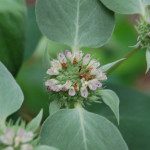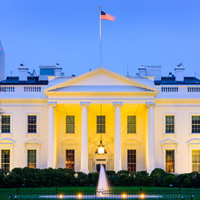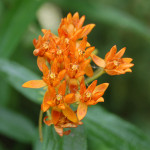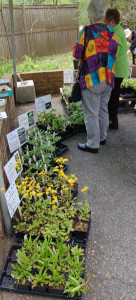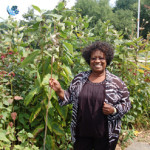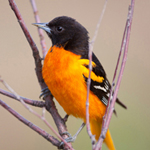RCLA Reporting
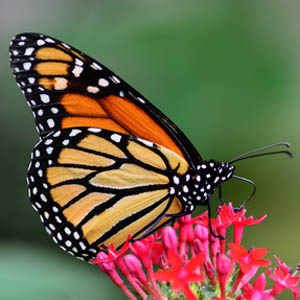
Monarchs, Milkweed, Flowering Plants, GMOs, Pesticides and People
Summary
President Obama and many Americans have become concerned about the drastically reduced Monarch butterfly population-devastated in large measure by widespread use of the herbicide glyphosate (as Roundup). Glyphosate is used to control weeds in the biotechnology-based GMO monoculture farming system. Under this industrial, unsustainable agricultural practice, milkweed plants vital to the Monarch’s life cycle have been eliminated from 100 million acres of US land. Discussed in detail in the article’s text are plans for growing milkweed and certain flowering plants that benefit Monarchs, to help restore the species’ numbers.
In addition to growing Monarch-friendly plants, to help reverse this iconic butterfly’s population decline, what actions can we take? Step 1-Be certain that all of your purchased plants and your garden areas intended for Monarchs remain free of any pesticides. Step 2-Choose to avoid GMO-grown products by buying organic. Step 3-Voice objections to GMO-monoculture growing practices and support labeling of GMO-produced food and fiber products.
Background
The North American Monarch butterfly population celebrated for its amazing annual migration from Mexico to Canada and back has fallen to dangerously low levels (90% decline since 2000). Plans for restoring appropriate butterfly habitats along Monarch migration paths in the Midwest and on the east coast have captured the nation’s attention. President Obama has proposed creation of a 1,500-mile-long butterfly habitat for Monarchs migrating through the U.S. heartland along Highway I-35 going from Minnesota to Texas.
The President’s plan encourages communities, park supervisors, school children, and others to grow flowering plants and milkweed for 50 to 100 miles on either side of the I-35 corridor coinciding with this major Monarch migration route. (Swan)i On the Atlantic coast, residents of the Chesapeake Bay region (and beyond) are encouraged to populate their yards with milkweeds and an array of plants attractive to butterflies including the native Mountain mint “an absolute magnet for… monarchs.”(Higgins)ii Such efforts can help bring about a network of way stations for the east coast migrating Monarchs. “Biologists believe that home gardeners can play a vital role in sustaining the monarch by providing a network of way stations to mitigate the loss of wildflower habitat.”(Higgins). The White House’s own garden under instructions from Michelle Obama now includes milkweed and other butterfly-friendly plants.
Monarch butterflies rely on milkweed plants during key stages of their life cycle. They deposit eggs only on milkweed leaves and the developing caterpillars thrive only when feeding on milkweed vegetation (common milkweed, swamp milkweed, butterfly milkweed).
The Monarch population decline has resulted from human activities. Truly devastating effects on Monarchs have been linked to destruction of milkweed plants on and near agricultural lands in their migration corridors—specifically due to use of the herbicide glyphosate (active ingredient of Roundup) in the cultivation of Genetically Modified Organisms (GMOs). How has this happened? Through biotechnology, the GMO crops, principally corn and soy have been made resistant to the broad spectrum herbicide Roundup® (it kills anything green and growing-with certain exceptions). This situation has brought about higher application levels and more frequent use of the glyphosate-containing Roundup® than if the corn and soy were vulnerable to the herbicide, as is the case for conventional (non-GMO) corn and soy crops. “With the advent of the [GMOs] ‘Roundup Ready’-or glyphosate-resistant-corn and soybeans, [growers] have been able to remove…milkweed from 100 million acres of land…” according to Dr. Scott Black, of The Xerces Society. (Swan)
In addition to being sprayed regularly with Roundup® during their growth phase, prior to planting the GMO corn and soy crop seeds are routinely treated with a systemic neonicotinoid insecticideiii and this can make their subsequent foliage, pollen and nectar toxic to many insects,iv including butterflies.
Chemical Pesticides and Monarch Butterflies
In the two recent articles referenced above by Swan and Higgins, readers are cautioned against having pesticides in habitats appropriate for Monarchs. From one, the advice offered is, “make sure to keep out herbicides.”(Swan) From the other, “Ask what pesticides have been used in growing the plants [that you select for butterfly habitats, because]…plants raised with systemic pesticides, such as neonicotinoids, will remain toxic to monarch larvae.”(Higgins). Since herbicide products are usually labeled as such, avoiding them could be possible for most gardeners wishing to do so. However, identifying the other chemical characteristics of pesticides (systemic, neonicotinoid) in order to prevent purchasing plants previously treated with them would involve research by members of the public with a less certain outcome.
To help gardeners stay free of the need for troublesome fact-finding about pesticides as well as to prevent them from introducing into their gardens pesticide-contaminated growing stock or hazardous pesticide products, we would simply recommend not purchasing plants previously treated with any pesticides and not applying any chemical pesticides (herbicides, insecticides or fungicides) in areas designated as butterfly habitat. This will not only protect monarch butterflies but also the many other beneficial insects, birds etc., from possible direct or indirect harm due to exposure to dangerous chemicals. Wild species, especially can vary in their susceptibility to the toxicity of a given pesticide product and these chemicals undergo limited testing in that regard before reaching the marketplace. Preventing exposure is the surest form of protection.
Monarch Habitat Helping to Sustain the Species and Biodiversity or It Works for More than Monarchs
Creation of the President’s butterfly habitat corridor and the Monarch Way Stations can help inspire citizens to work on protecting butterflies. …Where monarchs are provided with milkweeds and natural wildflower plantings free from hazardous pesticides, other insects and wild species can also thrive. The I-35 highway lies in a major flyway for migratory birds as does the east coast corridor and birds too will benefit from a less toxic environment.v Neonicotinoids have been linked to environmental contamination in surface water, ground water, soil and airvi,vii. If use of pesticides can be avoided in butterfly protected areas, then aquatic creatures can benefit as well.
Pesticides are inadequately tested for adverse effects on wild species from multiple and chronic low-level exposures.
With avoidance of Roundup® use, gardeners and their family members will not be exposed to the chemical (glyphosate) that has recently been designated as a probable human carcinogenviii.
Organic farm fields have been reported to show a 10 fold higher density of flowering plants than conventional fields and the organic border areas a 1.9 fold higher density of flowering plants than conventional field borders. (Henriksen, C., et al, “Road verges and winter wheat fields as resources for wild bees in agricultural landscapes,” Agriculture, Ecosystems and the Environment, v173, July 1, 2013)
Organic farming systems can have higher value to butterflies as well as bees since they generally do not grow monocultures, and do not plant GMOs, nor apply glyphosate. Since GMO/monoculture growing practices have adversely impacted butterflies, bees and even potentially people, and since we can decide as consumers not to purchase GMO-labeled products, citizens who care about butterflies and bees can contribute to efforts to have food and fiber products labeled as containing GMOs. Further, we can encourage change, both by expressing our opinions about the hazards of monoculture type agriculture and GMOs, as well as through the purchasing of organic food.
 Note: Obtaining plants that have not been treated with chemical pesticides involves questioning merchants at the point of sale about their own treatment of plants as well as prior treatment by the grower. Some plant sources such as Chesapeake Natives do not treat plants with chemical pesticides. See RCLA’s Native Plant Mini List for suggestions.
Note: Obtaining plants that have not been treated with chemical pesticides involves questioning merchants at the point of sale about their own treatment of plants as well as prior treatment by the grower. Some plant sources such as Chesapeake Natives do not treat plants with chemical pesticides. See RCLA’s Native Plant Mini List for suggestions.
Creating a butterfly friendly and non-toxic garden can be doubly rewarding if it is an intergenerational project. Contact RCLA for details. Call 301-593-4900 or email us at rachelcarsonlandmark@verizon.net
Diana Post
6-12-15
__________
FOOTNOTES
i Swan, Noelle, “How Obama’s butterfly highway paves way to save embattled monarchs,” in The Christian Science Monitor, May 22, 2015.
ii Higgins, Adrian “Extending The Monarch’s Reign” (a guide to saving the monarch) in The Washington Post “Local Living” section of the May 28th issue.
iii A recent report from USDA scientists has linked neonicotinoids to monarch butterfly survival and reproduction. The researchers showed that the neonicotinoid insecticide clothianidin can have effects on monarch caterpillars at doses as low as 1 part per billion (ppb). The clothianidin LC50 for caterpillars is 15 ppb. In sampling experiments from agricultural areas in South Dakota the researchers found that milkweeds had on average over 1 ppb clothianidin. (Pecenka J., & Lundgren, J., (2015) “Non-target effects of clothianidin on monarch butterflies,” Science and Nature, 102, 19, as described in Latham, J, “New Research Links Neonicotinoid Pesticides to Monarch Butterfly Declines”, Independent Science News, April 4, 2015))
According to scientists (Krupke, Baute, Smith) the benefits of treating corn and soy crop seed with neonicotinoid (neonic) insecticides varies depending on insect pests, soil type and geographic location. For corn acres in Ontario, Canada only 10-20% need to be planted with neonic-treated seed, however, in practice virtually all such seed is neonic-treated. Numerous bee kills reported in Ontario during 2012-2013 were attributed to neonic-treated seeds. Corn and soy seeds are treated, not by farmers but by the supplier of seeds to the farmer. J. Carter, “Canadian Province to Limit Neonic Seed Treatments,” American Bee Journal, Sept. 2014)
iv A study with farmer-friendly ground beetles showed that there were significant adverse effects on them after they consumed slugs that had eaten soybean plant material containing a neonicotinoid residue. While the slugs were unaffected, the ground beetles were quickly poisoned, many dying within half a day.” (J. Carter, “Canadian Province to Limit Neonic Seed Treatments,” American Bee Journal, Sept. 2014)
v Ingestion of seeds treated with the neonicotinoid insecticide Imidacloprid by farmland birds may result in their exposure to toxic amounts of this insecticide. At the high dose adult partridges were killed; at the low dose there were no deaths but instead there were changes in plasma indicators and evidence of a reduced immune response in their chicks. Exposure of birds in the field through ingestion of Imidacloprid-treated seeds can occur. (Lopez-Antia, A, et al, Imidacloprid-treated seed ingestion has lethal effect on adult partridges and reduced both breeding investment and offspring immunity,” Envir Research, v 136, Jan 2015)
vi Neonicotinoids are persistent chemical insecticides, with high leaching potential into groundwater and high runoff potential into surface water. (Anderson, J., et al., Neonicotinoids in the Canadian aquatic environment: A literature review on current use products with a focus on fate, exposure, and biological effects,” Microbiology Abstracts C, v. 505, pp409-422, Feb 2015)(Morrissey, C., et al, “Neonicotinoid contamination of global surface waters and associated risk to aquatic invertebrates: a review” Environ Int, v74, Jan 2015)
vii “Environmentally relevant concentrations of neonicotinoids (neonics) in surface waters worldwide are well within the range where both short and long term impacts on aquatic invertebrate species are possible over broad spatial scales.” Morrissey, C., et al, “Neonicotinoid contamination of global surface waters and associated risk to aquatic invertebrates: a review” Environ Int, v74, Jan 2015)
viii The herbicide glyphosate was classified as probably carcinogenic to humans per monograph 112 from the World Health Organization’s International Agency for Research on Cancer (IARC), March 20, 2015.

